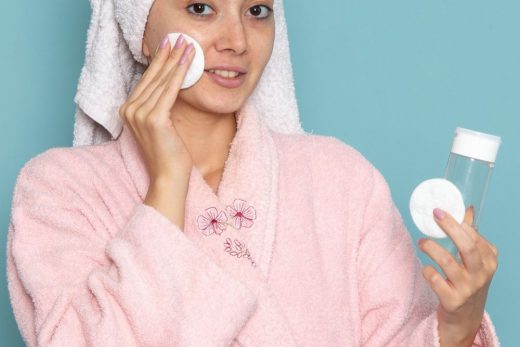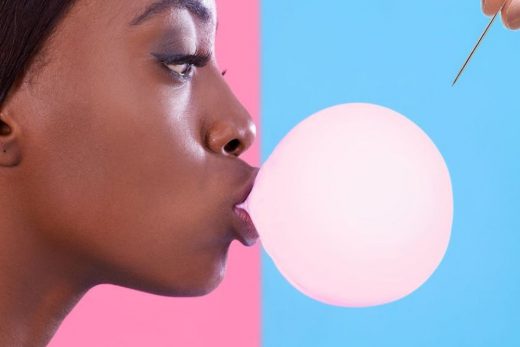You might be worried that primers lend themselves to a certain skin type, but that’s actually not the case. “Brands have become savvy and created solutions for every skin issue you could have. “If you’re oily or dry, there’s a primer for you.”
If you have dry skin, look for hydrating face primers that have ingredients like hyaluronic acid or glycerin. These ingredients keep dry skin moisturized to prevent flaking, cracking, or patchiness through the day.
If you have oily skin, look for words like oil-free and mattifying on the packaging. Primers for oily skin generally are formulated with absorbents to soak up excess oils from the skin, leaving behind a powdery, matte finish.
If you have red skin or hyperpigmentation, seek out color correcting primers. These primers help even out any skin tone issues, whether you have redness, dullness, or hyperpigmentation.
If you want a radiant finish, go for a luminizing primer. You’ll get all the benefits of a normal primer, but luminizing primers typically have a touch of highlighter-esque sparkle to give you that “lit from within” glow.
If you have mature skin, you’ll want to reach for a smoothing primer that helps even out skin texture. Hydration is also key for this area, so just like anyone with dry skin concerns, you’ll want a primer that has skin-quenching ingredients.
Should I choose a silicone-based or water-based primer?
There are plenty of options that go outside the box — think serum-like primers or even sunscreens that double as a primer — but all of these fall under the umbrella of either silicone-based or water-based primers. Here’s your guide:
Silicone primers are wonderful for smoothing out skin and giving you a poreless appearance. If you have dry skin or uneven texture, this is the pick for you, but if you have oily skin, you may want to steer clear of silicone-based primers, as they tend to feel heavier on your skin.
Water-based primers are lighter and almost act as a second moisturizer. Many water-based primers offer a mattifying effect that may work well for oily skin.
Still not sure? Check the ingredients on your favorite products to make sure you aren’t layering ingredients that repel each other: Using “a water-based moisturizer and then use an oil based-primer … creates a pilling effect,” says Greenberg. “You really have to match up like-bases so they don’t create a problem.” Be sure to check your go-to foundation’s formulation before investing in a new primer, too.
When should you apply primer?
Primer goes on after skincare, but just before any face makeup. “It should be last before makeup,” says Greenberg. “So, everything skincare related — this includes sunscreen — should go on before primer.”
How do you apply face primer?
This is one step of your makeup routine where you can go hands-on: “Use your fingers to blend it on, which will warm up the product and allow it to be absorbed into your skin faster.
“Start out using a little bit— between a pea size and quarter size amount,” depending on your skin type. Generally, oily skin types need less primer than drier skin. If you don’t want to use your fingers, Aunique likes applying primer with a damp beauty blender for a seamless finish.
Before reaching for any face makeup, make sure your primer is totally dry. “To get the maximum benefits, you want to let your primer fully absorb into skin before you add foundation,” says Oquendo. And even if you don’t wear makeup, a primer will still work to “smooth over pores and create a blurring effect,” he adds.
What are some common primer mistakes to avoid?
Not applying primer all over the face. Greenberg says that if you don’t put primer everywhere you’re planning to put foundation, you’re asking for trouble. Some of your makeup will go on more evenly than the rest, and some will probably wear off more quickly, creating a patchy, uneven mess.
Using competing formulas for primer and foundation. Primers and moisturizers can mix like oil and water — literally. Check your skincare and makeup ingredients to make sure you aren’t investing in a primer that might that repel your go-tos.
Applying foundation too soon after applying primer. Do make sure your primer is completely dry before applying makeup. If your primer hasn’t fully set and you go in with base makeup, you’ll application issues like pilling and streaking.
Is primer actually necessary?
This truly depends on individual preference. If you find that your foundation goes on just fine without primer and stays through the day, you can choose to forgo the additional step. If, however, you’re looking for more staying power and a smoother slate for your makeup, you would likely benefit from adding a primer into your routine. “I think it’s necessary if you want your makeup to last and look its best,” says Greenberg.
Are there any disadvantages to primer?
Not really. Greenberg says the only disadvantage might be that primer adds a bit more time to your routine — but the end results are worth the extra couple minutes.





